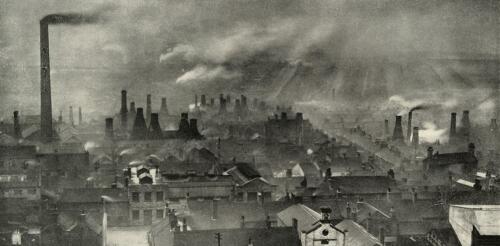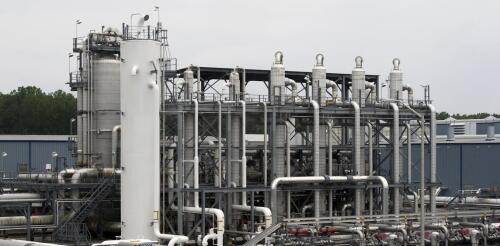Fossil fuels
When people talk about the “Anthropocene,” they typically picture the vast impact human societies are having on the planet, from rapid declines in biodiversity to increases in Earth’s temperature by burning fossil fuels. Such massive planetary changes did not begin all at once at any single place or time. That’s why it was controversial when, after over a decade of study and debate, an international committee of scientists – the Anthropocene Working Group – proposed to mark the Anthropocene as an epoch in the geologic time scale starting precisely in 1952. The marker was radioactive fallout from hydrogen bomb tests. On March 4, 2024, the commission responsible for recognizing time units within our most recent period of geologic time – the Subcommission on Quarternary Stratigraphy – rejected that proposal, with 12 of 18 members voting no. These are the scientists most expert at reconstructing Earth’s history from the evidence...
The Biden administration has frozen pending decisions on permit applications to export liquefied natural gas, or LNG, to countries other than U.S. free trade partners. During this pause, which will last for up to 15 months, the administration has pledged to take a “hard look” at economic, environmental and national security issues associated with exporting LNG. Environmental advocates, who have expressed alarm over the rapid growth of U.S. LNG exports and their effects on Earth’s climate, praised this step. Critics, including energy companies and members of Congress, argue that it threatens European energy security and energy jobs in the U.S. Emily Grubert, associate professor of sustainable energy policy at the University of Notre Dame and a former official at the U.S. Department of Energy, explains why large-scale LNG exports raise complex questions for U.S. policymakers. Is the US a major LNG supplier? The U.S. is now the world’s largest LNG exporter...
Reading down the lengthy final agreement of the COP28 United Nations climate conference held in December 2023, you’ll go a long way before finding a strong, active verb. The lengthy recitation of climate impacts “notes with concern” and occasionally with “significant concern” glaring gaps in countries’ current policies. But while countries volunteered pledges to act, they were less keen to have those pledges framed as binding agreements in the final text. Reactions to COP28’s conclusion have been understandably mixed. Going into the talks, the world was more on track to avert catastrophic warming than it would have been without the 2015 Paris Agreement, but a long way from where it needs to be. Even if all the pledges made at COP28 are implemented, the world will still exceed the Paris goal of keeping global warming under 1.5 degrees Celsius (2.7 Fahrenheit) compared to preindustrial temperatures....
Every year, Americans buy somewhere between 35 million and 50 million Christmas trees, and many more pull an artificial tree out of storage for the season. In all, about three-quarters of U.S. households typically have some kind of Christmas tree, surveys show. People often ask which is more sustainable – a real tree or an artificial one? It’s a big debate, and the answer depends on who you ask and which factors you consider. A more useful question is: How do I find the most sustainable tree of the kind I want to get? I’m a forestry professor who works on issues of sustainability. There are advantages and disadvantages to both cut trees and artificial trees. Here are some tips to consider for each. Cut Christmas trees require water and maintenance – and careful thought about disposal. 10'000 Hours/DigitalVision via Getty Images If you’re buying a live Christmas tree W...
Climate disasters are now costing the United States US$150 billion per year, and the economic harm is rising. The real estate market has been disrupted as home insurance rates skyrocket along with rising wildfire and flood risks in the warming climate. Food prices have gone up with disruptions in agriculture. Health care costs have increased as heat takes a toll. Marginalized and already vulnerable communities that are least financially equipped to recover are being hit the hardest. Despite this growing source of economic volatility, the Federal Reserve – the U.S. central bank that is charged with maintaining economic stability – is not considering the instability of climate change in its monetary policy. Earlier this year, Fed Chair Jerome Powell declared unequivocally: “We are not, and we will not become, a climate policymaker.” Powell’s rationale is that to maintain the Fed’s independence from politics and political cycles, it should use...



